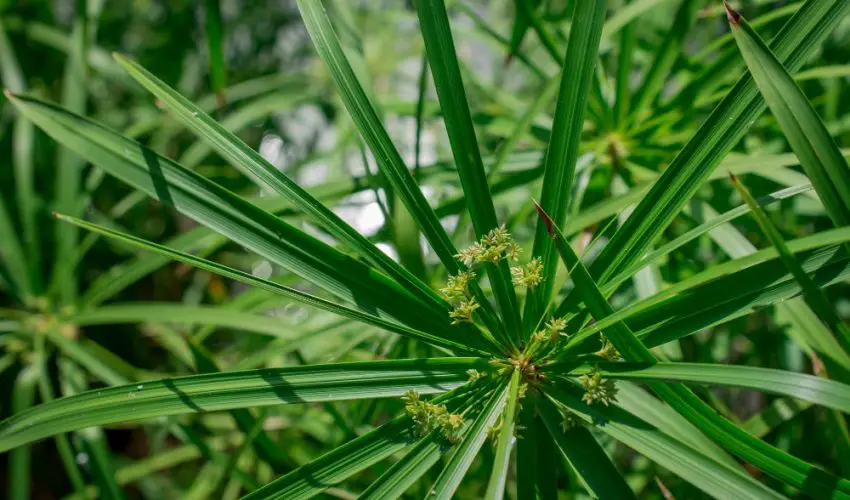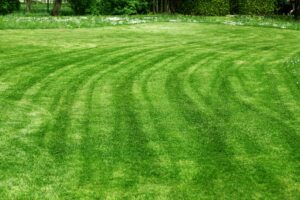If you’re a homeowner with a passion for your lawn, you’ve likely encountered a persistent and challenging weed known as nutsedge, sometimes referred to as nutgrass.
Table of Contents
ToggleUnlike typical grasses or broadleaf weeds, nutsedge belongs to the sedge family. It’s not just the vibrant yellow-green blades that make it stand out but also its unique survival mechanism.
With rhizomes (underground stems) and nutlets (small tubers) that can lie dormant in the soil across seasons, nutsedge is a master of endurance.
This resilience is precisely why understanding and implementing the correct approach to its eradication is key for those of us aiming to reclaim our green spaces.
Based on my experience, the most effective method for eliminating nutsedge is to use a selective herbicide like Sedgehammer+ Turf Herbicide.
Identifying Nutsedge in Your Lawn
One of the easiest ways to tell whether or not you have nutsedge in your lawn is to look for its distinctive yellow-green color. Nutsedge will be much brighter and shinier than the rest of your grass, and it often stands out from the rest of the lawn.
It usually has thick upright leaves that are V-shaped and small yellow flowers that grow from a triangular stem in late spring and early summer.
You can also try and pull on a nutgrass stem, it should come up easily with little resistance, whereas grass is more firmly rooted to the ground.
How to Control Nutsedge in your Lawn
Controlling nutsedge can be tricky since it has deep roots, making it difficult to eliminate the entire plant. However, there are some methods that are more effective than others. Here are our top tips for eliminating nutsedge from your lawn:
1. Use a Selective Herbicide
Using a selective herbicide instead of Roundup is more suitable way to kill nutsedge in your lawn. The benefit of this method is that it won’t harm the surrounding grass, however it might require multiple treatments to kill the weeds.
Sedgehammer+ Turf Herbicide is one of the most popular selective herbicides that specifically targets nutsedge.
To maximize the effect, applying the herbicide should be done during late spring/early summer when plants are still growing.
It is important to wait 2-3 days after applying weed sprays to your lawn before mowing. This gives the chemicals enough time to take effect and ensures that you get the best result from the treatment.
2. Remove by Hand
Removing nutsedge by hand is effective, but labor-intensive. By doing so, you can avoid the need for herbicides and ensure that the entire root system is removed. Nut grass roots can extend up to 12-18 inches below the surface, so it is important to carefully pull them out in order to not break the roots.
To make sure that the nutgrass wont grow back, any stray roots should be carefully dug up and disposed of in a sealed trash bag.
3. Mow High
Keeping your lawn taller through higher mowing settings can effectively stifle nutsedge by promoting a thick, competitive turfgrass canopy. This strategy leverages the principle that taller grass blades support deeper root systems, enhancing the lawn’s overall health and resilience.
By maintaining a height of at least 3 inches, you not only discourage nutsedge due to the reduced sunlight reaching the soil but also foster a stronger, more robust lawn.
How To Prevent Nutsedge From Growing In Your Lawn
The best way to prevent nutsedge from growing in the lawn is by using a pre-emergent herbicide. These are applied before the weed has had a chance to sprout, and can help keep it from taking root in the first place.
Maintaining soil pH levels at around 6.5, or slightly higher, is another way to help prevent nutsedge from taking over your lawn. This will make the soil more favorable for the grasses and less hospitable for Nutsedge growth. Properly balanced soil pH will also contribute to overall healthier grass and better results from nutrient application.
You can also make sure to mow your lawn regularly to help prevent nutsedge from establishing itself by removing the nutlets before they can take root.
Does Nutsedge Come Back Every Year?
Yes, nutsedge is a perennial plant that grows year after year.
Its resilience is partly due to its ability to produce hundreds of tubers or nutlets annually, which can remain dormant in the soil for several years before sprouting.
This means even if you think you’ve eradicated it one year, new plants can emerge from previously dormant tubers and continuing the cycle of regrowth.
Conclusion
Tackling nutsedge in your lawn requires patience and persistence. But with the right approach you can effectively manage this invasive weed.
By implementing the strategies in this article you can minimize the impact of nutsedge in your lawn. Remember, a healthy, well-maintained lawn is your best defense against nutsedge and other weeds.



